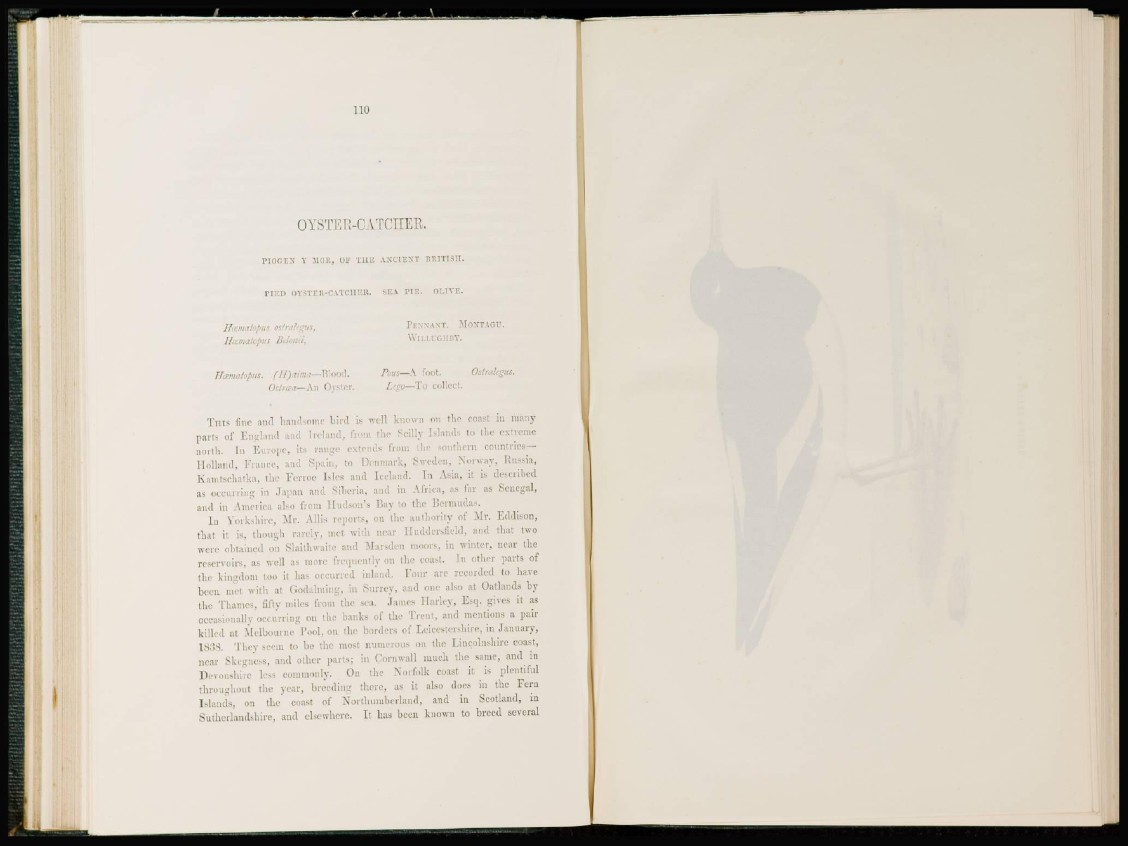
1 10
OYSTER-CATCHER.
riOGF.N Y MOR, OP THE ANCIENT RRITISII.
TIED OYSTER-CATCHER. SEA PIE. OLIVE.
Hicmatopus os!m!<gns, PENNANT. MONTAGU.
Hotmatopus B<Jouii, WILI.UGIIBY.
Hcemafopus. fH)aima—B'ood. Pons—A foot. Ostralegus.
Ostnra— An Oyster. Lego—To collect.
THIS fine and handsome bird is well known on the coast in many
parts of England and Ireland, from the Scilly Islands to the extreme
north. In Europe, its range extends from the southern countries —
Holland, fiance, and Spain, to Denmark, Sweden, Norway, Russia,
Kanitschatka, the Ferroe Isles and Iceland. In Asia, it is described
as occurring in Japan and Siberia, and in Africa, as far as Senegal,
and in America also from Hudson's Bay to the Bermudas.
I n Yorkshire, Mr. Allis reports, on t h e authority of Mr. Eddison,
that it is, though rarely, met with near Huddersfield, and that two
were obtained on Slaithwaite and Marsden moors, in winter, near the
reservoirs, as well as more frequently on the coast. In other parts of
the kingdom too it has occurred inland. Four are recorded to have
been met with at Godahning, in Surrey, and one also at Oatlands by
the Thames, fifty miles from the sea. James Harley, Esq. gives it as
occasionally occurring on t h e banks of the T r e n t , and mentions a pair
killed at Melbourne Pool, on the borders of Leicestershire, in January,
183S. They seem to be the most numerous on t h e Lincolnshire coast,
near Skegness, and other parts; in Cornwall much the same, and in
Devonshire less commonly. On the Norfolk coast it is plentiful
throughout the year, breeding there, as it also does in the Fern
Islands, on the coast of Northumberland, and in Scotland, in
Sulhcrlandshire, and elsewhere. It has been known to breed several